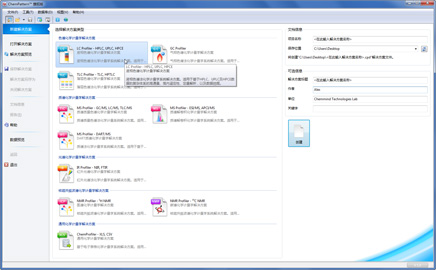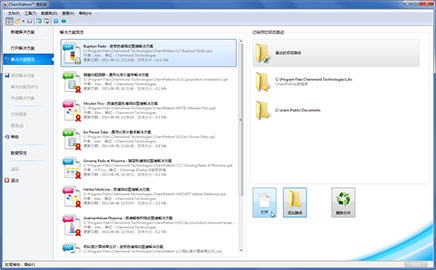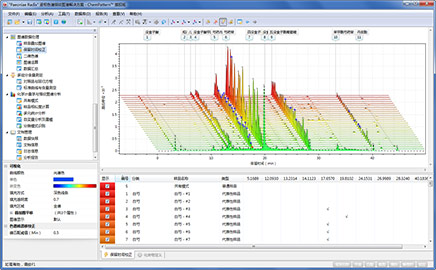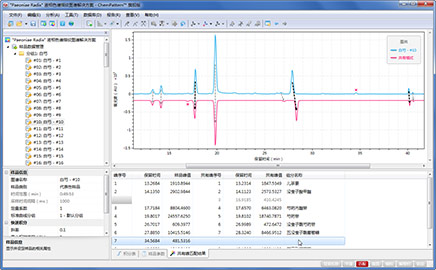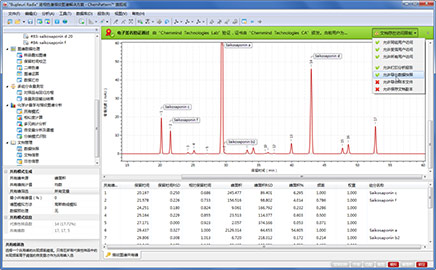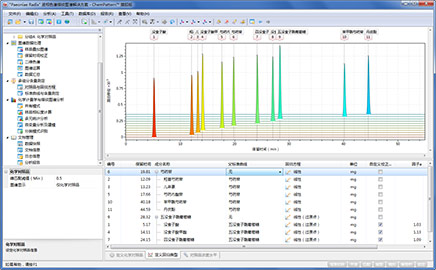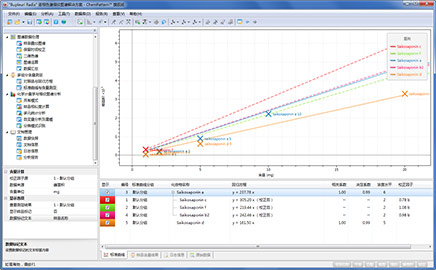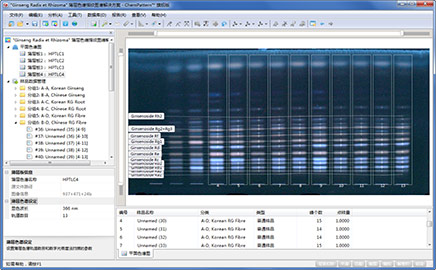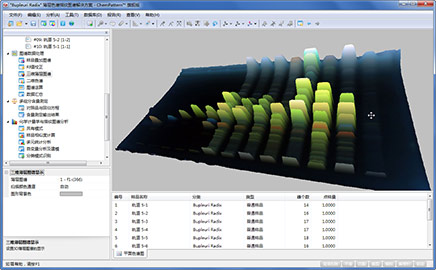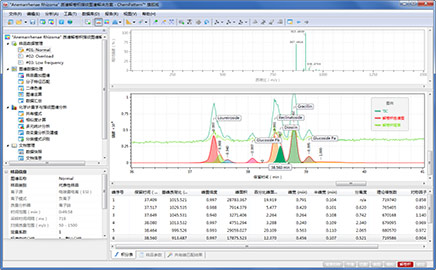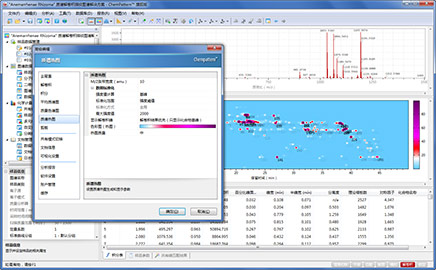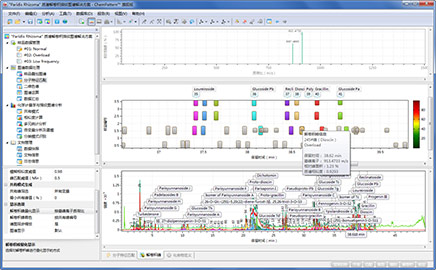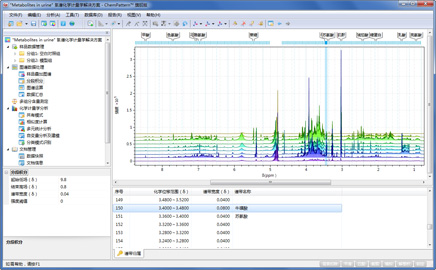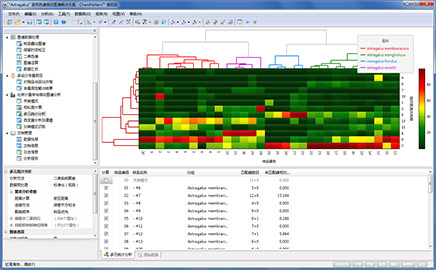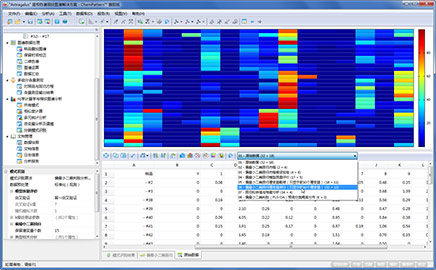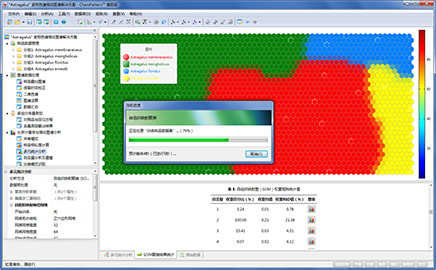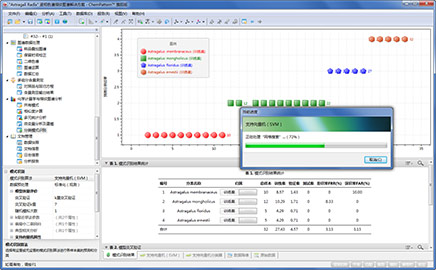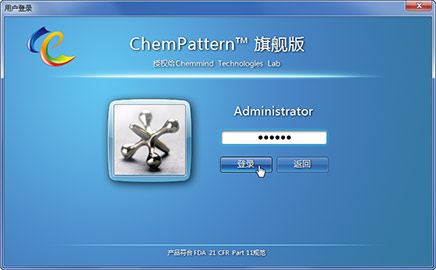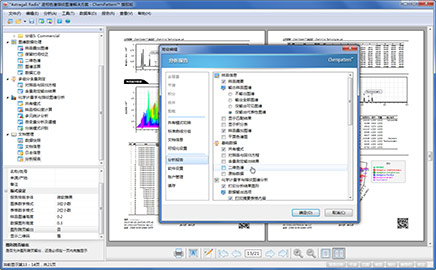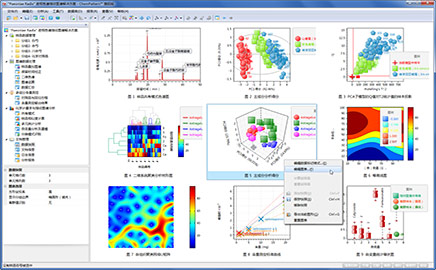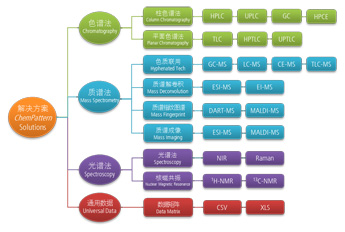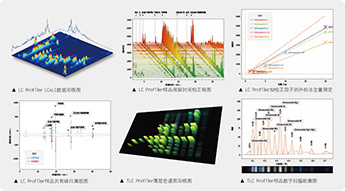ChemPattern™ offers a co-platform quantitative analytical chemistry data analysis technology that supports multiple types of instruments. It can provide one-stop processing and analysis solutions for analytical chemistry data measured by instruments including chromatography, mass spectrometry and spectroscopy instruments. Via common data interfaces, this system establishes seamless connection between wet laboratory with instrumental analysis and dry laboratory with data analysis. For different characteristics of various analysis instruments, corresponding workstation functions like signal processing and correction are offered. Meanwhile, the application of this system solves the difficulty in efficiently analyzing and processing the exponentially growing high-dimensional high-resolution massive data obtained by analytical instruments. In addition, it addresses the two core issues concerned by chemometrics, the migration of data and models obtained by analytical instruments of different types or models, and the co-platform comprehensive comparative analysis. The whole processes of processing and analysis of complex system data by different types of analytical instruments are also regulated with standardized operations.
System solution for chromatography
Providing various signal processing and correction functions for common chromatography, some of the features of ChemPattern™ are as listed below:
- The software provides a retention time correction function for chromatographic peaks, allowing efficient and accurate automatic and manual alignment to all sorts of complex retention time shifting and peak overlapping problems.
- For content determination, external standard calibration correction factors and grouping correction are offered. These functions are applicable for the comprehensive multicomponent content determination of complex system samples from large sample sets or multiple data sources.
- The multiple common pattern modeling parameters ensure that the entire process of common peak screening is performed in a statistical manner.
System solution for mass spectrometry
Mass spectrometry (MS), especially liquid chromatography-mass spectrometry (LC-MS), is an essential means for analyzing samples of complex systems. The high-dimensional high-resolution data obtained by this method are extremely valuable for the quality control and study of complex systems. ChemPattern™ offers extensive and in-depth data processing support for various types of data represented by MS techniques with different ion sources, such as ESI-MS, DART-MS and ICP-MS. Some of its features are as follows.
- MS deconvolution: This function extends the deconvolution function of GC-MS to LC-MS applications with more complex information. Through highly optimized rapid deconvolution algorithm, MS data in different qualities (different resolutions, sampling frequencies, etc.) are all compatible.
- Molecular feature matching: By combining the MS and chromatographic information of compounds to carry out automatic alignment of deconvoluted chromatographic peaks between samples, fast and accurate matching of compounds is realized.
- MS common pattern: The common pattern generated according to the MS spectra of representative samples can perform accurate matching, and it is applicable for the thorough analysis of DART-MS, ICP-MS and other data.
System solution for NMR
ChemPattern™ data processing system supports 1H-NMR and 13C-NMR nuclear magnetic resonance spectroscopy methods. High-throughput and high content chemometrics analysis of complex system samples are carried out via segmented integration and components attribution.
System solution for spectroscopy
An important component of chemometrics is spectroscopic analysis represented by multivariate calibration quantitative analysis. ChemPattern™ provides system support for the processing of spectroscopic data represented by near-infrared data, and fully supports online spectroscopic analysis and rapid non-invasive analysis of analysis samples of complex systems.
Common solution for chemometrics
Common solution helps to conduct chemometric analysis of any data from analytical instruments that are not involved in ChemPattern™.

